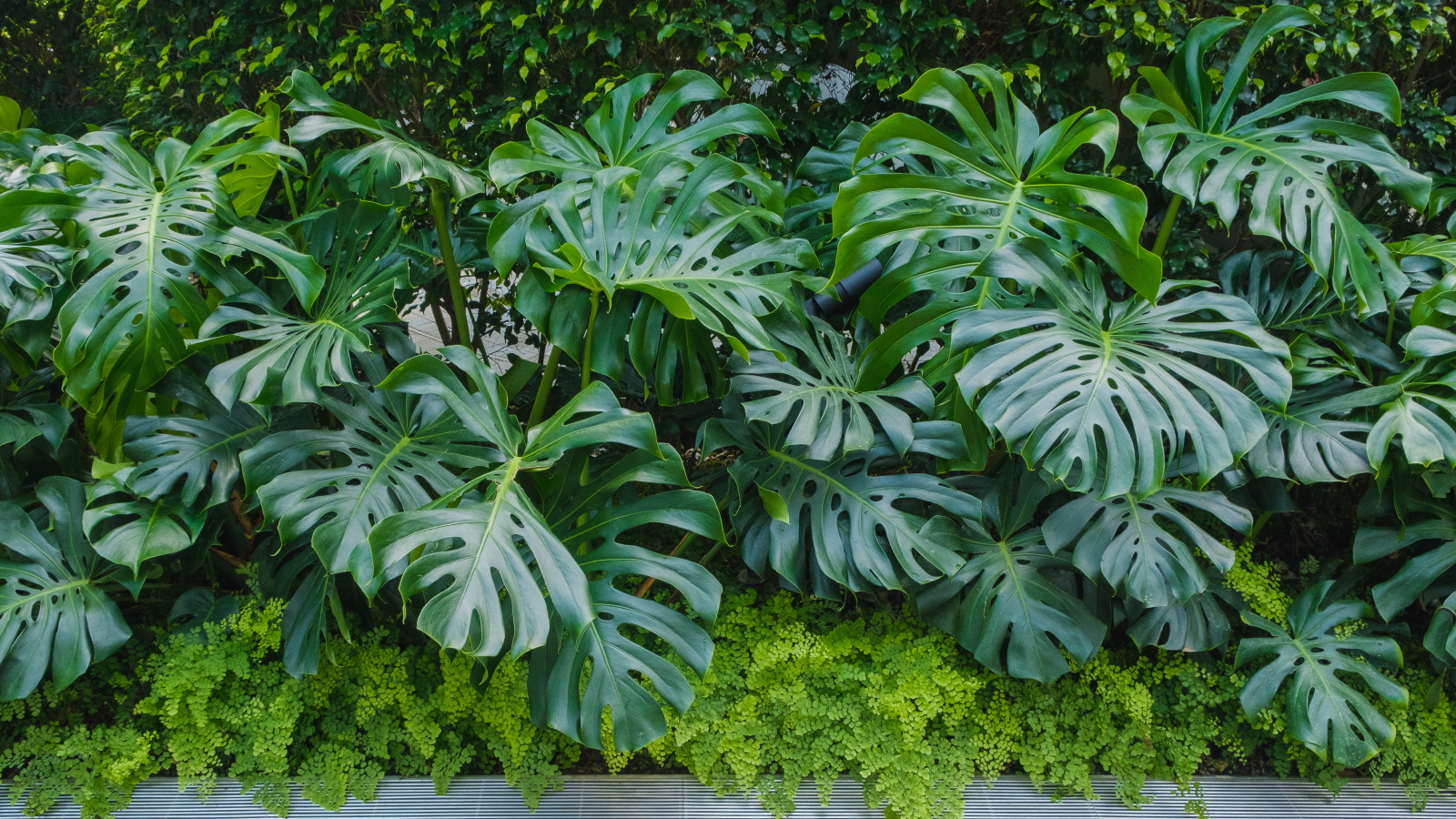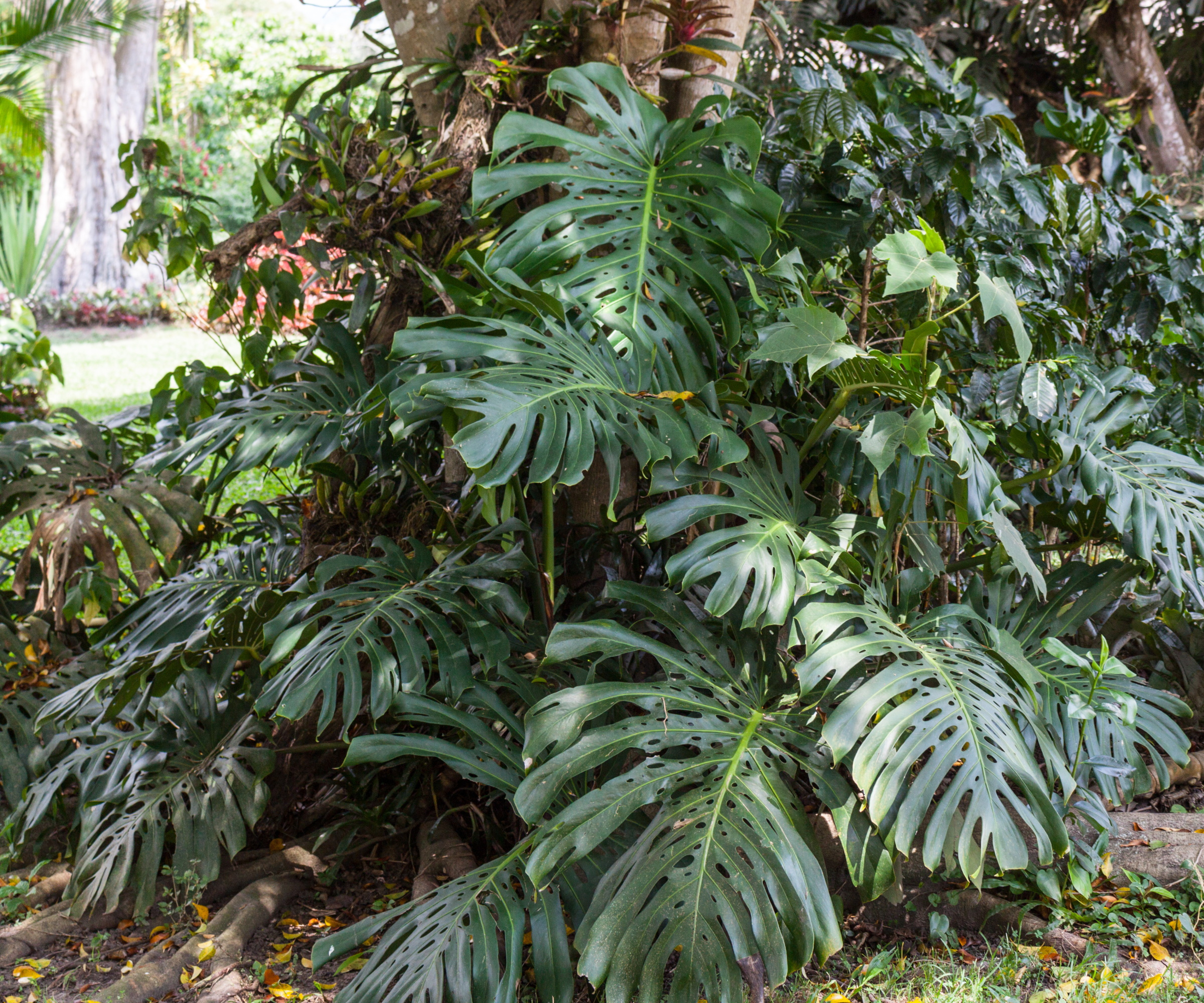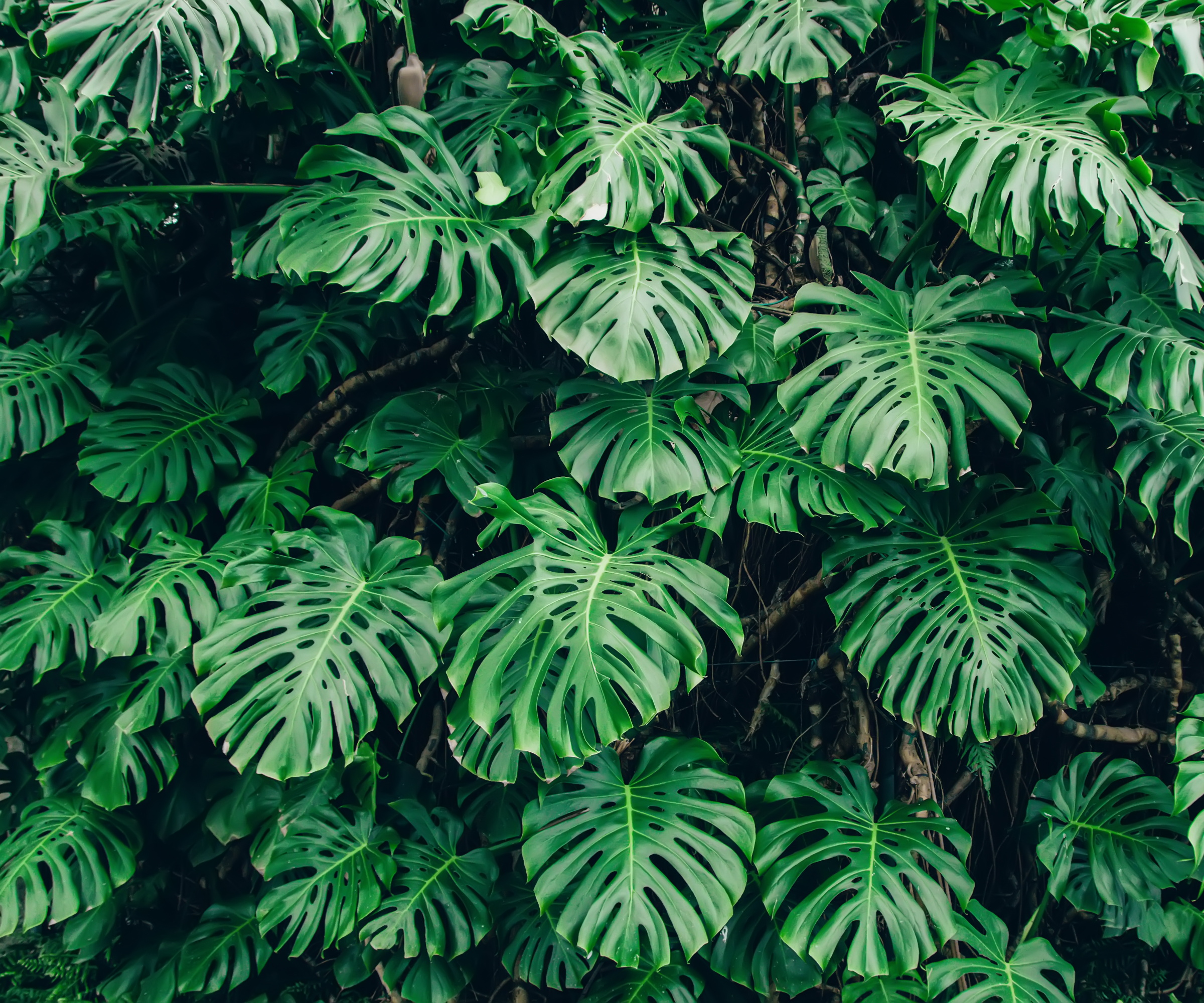Can you grow monsteras outdoors? Plant expert reveals where in the world you can grow these luscious jungle leaves in your yard
In the right conditions, you can fill your garden with this houseplant staple


As a self-confessed houseplant fanatic, I have my favorites among my indoor plant collection. A plant that stands out as one of my most prized possessions is my Monstera deliciosa. I'm not the only indoor plant collector to make this claim, either, as these jungle plants have become household favorites for bringing lush foliage to our interiors.
If you're like me, you may want to extend your joy of monsteras to your outdoor space, but you're wondering if you can actually grow monsteras outdoors. After all, these are topical indoor plants that thrive in the humidity and warmer temperatures of their native habitat - tropical rainforests in Mexico and Central America. But, it might actually be more possible than you assume. In fact, monsteras are able to tolerate cooler temperatures than those in their native environment, making it possible to grow and care for monsteras outdoors across some regions.
To find out for good where you can grow monsteras outdoors, I asked a plant expert about the matter. Here's everything she shared about growing monsteras outdoors successfully and without causing harm to your plant.

Can you grow monsteras outdoors?
In short, yes. Monsteras can grow outdoors, but only in very specific conditions.
'Monsteras should only be grown outdoors permanently across US hardiness zone 10+, which is fairly limited. This includes where I live in Southern California,' says Julie Bawden-Davis, plant expert at Healthy Houseplants.
This is because they're not cold-tolerant houseplants and will show signs of cold damage with leaf discoloring or stunted growth when exposed to too-cold temperatures.
However, this isn't to say gardeners in slightly cooler regions aren't able to temporarily grow monsteras outdoors during the summer months. It's actually beneficial to move houseplants outdoors during the warmer months to soak up some sunshine and fresh air.
With that in mind, here are some key notes on how and where to grow monsteras outdoors:
How to grow monsteras outdoors

- Temperature: As mentioned, monsteras should only be grown outdoors in higher hardiness zones. This reflects the optimal temperatures they grow in: 65°F to 85°F. They will tolerate down to around 50°F, so you can move your monstera outdoors for summer in some cooler regions. However, they are not frost-tolerant plants and will need to be brought back indoors for the colder months as part of your overwintering a garden checklist. 'You will want to grow monsteras in a container, so it can come back indoors before frost hits in fall,' Julie advises. 'Grow in a sunny window in a warm area of the home and keep the soil moist but not soggy,' she adds.
- Position: In their natural environment, monsteras can be found growing beneath canopies of trees, where they have shade cast over them. Ideally, this should be recreated in your yard: 'You want monsteras to be shielded from direct sunlight. They are best grown in dappled sunlight,' says Julie. 'They also do well in eastern exposures that have afternoon shade,' she adds. Leaving your monstera exposed to direct sunlight may cause leaf scorch and turn your monstera leaves yellow. It's best to position it beneath a canopy of trees, or in other areas with some garden shade, like against a wall or fence. Take care not to prevent your monstera from receiving any light as insufficient lighting can cause leggy growth, a lack of fenestrations (holes in their leaves), and discoloring.
- Watering: When it comes to watering your outdoor monstera, you need to take into account the weather. 'Keep the soil moist but not soggy,' advises Julie. 'If you live in an area with dry summers, such as Southern California, you will need to water a couple of times a week during the warm months if there is no rainfall,' she explains. Of course, if you live in a region experiencing rainfall, take into account this will be providing your monstera with water, meaning you will need to water it less frequently. You can use this soil moisture meter from Amazon to identify when it's time to water your plant - a general rule of thumb is to wait until the top three to four inches of your monstera's soil is dry.

Julie Bawden-Davis is a garden author and University of California Certified Master Gardener, who has written several gardening books, including Indoor Gardening The Organic Way. In addition to running HealthyHouseplants.com, she shares indoor gardening advice on her YouTube channel @HealthyHouseplants.
FAQs
Do outdoor monsteras need fertilizing?
Fertilizing monsteras is a great way to boost their access to essential plant nutrients for growth. These popular houseplants can be grown outdoors in US hardiness zones 10+ and in slightly cooler regions during summer. It's just as beneficial to feed them when they're growing outdoors as it is when they're growing indoors.
'For lush growth, feed with a well-balanced, organic fertilizer once in spring and again in summer for ground-grown plants, and monthly spring through early fall for container grown plants,' advises Julie Bawden-Davis, plant expert at Healthy Houseplants. This monstera fertilizer from Amazon is a good choice.
Take care not to fertilize your monstera when it isn't actively growing - this could cause root burn or houseplant root rot.
What can I train my monstera to climb in my yard?
In their natural environment, monsteras use their aerial roots to climb the trunks of trees. When growing monsteras outdoors in a permanent position (only in US hardiness zones 10+), you can train it to do the same by attaching its stems to a tree trunk with this florist wire from Walmart. Alternatively, and a better option for potted outdoor monsteras, use a moss pole (from Amazon) in place of a tree trunk.
So, while it's only possible to grow monsteras outdoors permanently in hotter regions, you can still enjoy your monstera outdoors during the warmer months of the year. If you do choose to do this, make sure to prevent pests when bringing houseplants back indoors.
If you're looking for more unique ways to grow monsteras, try growing a monstera in water. This is also a good way to propagate a monstera to grow more of these beauties and share them with others.
Sign up to the Homes & Gardens newsletter
Design expertise in your inbox – from inspiring decorating ideas and beautiful celebrity homes to practical gardening advice and shopping round-ups.

Tenielle is a Gardens News Writer at Homes & Gardens. She holds a qualification in MA Magazine Journalism and has over six years of journalistic experience. Before coming to Homes & Gardens, Tenielle was in the editorial department at the Royal Horticultural Society and worked on The Garden magazine. As our in-house houseplant expert, Tenielle writes on a range of solutions to houseplant problems, as well as other 'how to' guides, inspiring garden projects, and the latest gardening news. When she isn't writing, Tenielle can be found propagating her ever-growing collection of indoor plants, helping others overcome common houseplant pests and diseases, volunteering at a local gardening club, and attending gardening workshops, like a composting masterclass.
-
 This year's Met Gala outfits are the source of color inspiration I didn't know I needed – Anna Wintour's all cool-blue look has given me the perfect scheme for my living room remodel
This year's Met Gala outfits are the source of color inspiration I didn't know I needed – Anna Wintour's all cool-blue look has given me the perfect scheme for my living room remodelFarrow & Ball has created sumptuous color schemes based on this year's best Met Gala outfits, and they are a great source of inspiration if you are looking for super on-trend palettes
-
 I stopped my monstera leaves curling by making these easy changes – now its statement foliage is the best its ever looked
I stopped my monstera leaves curling by making these easy changes – now its statement foliage is the best its ever lookedKeep your monstera looking perky by managing moisture levels correctly